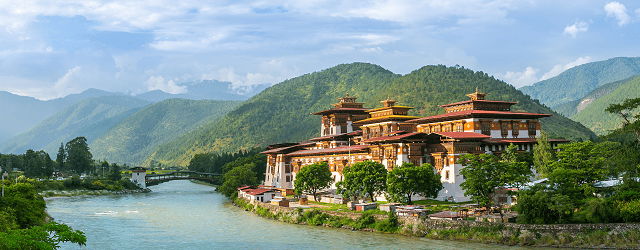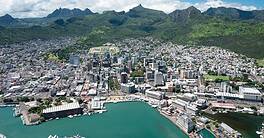Bhutan’s geography plays an out-size role in its economic health.

|
BHUTAN: VITAL STATISTICS |
|---|
|
Location: South Asia |
|
Neighbors: China, India |
|
Capital city: Thimphu |
|
Population (2020): 768,365 |
|
Official language: Dzongkha (official). Also Sharchhopka, Lhotshamkha and others |
|
GDP per capita (2018): US$3,360.30 |
|
GDP growth (2018): 2.3% |
|
Inflation (2018): 2.7% |
|
Currency: Ngultrum |
|
Investment promotion agency: Department of Industry, Ministry of Economic Affairs |
|
Investment incentives available: Generally, the same as for domestic companies |
|
Ease of Doing Business rank (2020): 89 |
|
Corruption Perceptions Index rank (2019): 25 |
|
Political risks: Political system risk, top-heavy bureaucracy |
|
Security risks: Unresolved territorial disputes with China; no air force, dependent on India for military air services; assaults, rapes and petty crime increasing, though uncommon |
|
PROS |
|---|
|
Overall growth and macroeconomic stability |
|
Abundant natural beauty |
|
Projections for increased GDP growth |
|
Relatively little crime |
|
CONS |
|---|
|
High volume of imported materials for construction has increased the current account deficit |
|
Economic risk rated high; financial system risk rated very high |
|
Landlocked |
|
No railroads and few roads; emergency services generally not available |
|
Flights impacted by weather, particularly during monsoon season May to September |
|
High per diem tax charged to foreigners visiting the country |
|
Border with China closed |
|
Sources: AM Best, Bhutan News Network, Business Bhutan, The Bhutanese, Daily Bhutan, Canadian government Travel Advisory, CIA World Factbook, International Monetary Fund, KuenselOnline, Transparency International, U.S. News, US State Department Travel Advisory, World Bank, World Population Review |
|
For more information, check out Global Finance‘s Bhutan Economic Report data page. |
Bhutan famously eschews GDP and GNP as key measures of the nation’s well-being, instead focusing on gross national happiness (GNH), a formula that articulates an understanding of development beyond economic growth, incorporating social, psychological, cultural, environmental and governance dimensions, explains Kent Schroeder, executive director of the Bhutan Canada Foundation.
Wedged between India and China, Bhutan has a profitable macroeconomic relationship with the former and an edgy political relationship with the latter.
Its water resources and hilly topography, with steep drops in elevation, are an important source of income. “The main driver for Bhutan’s economy is hydropower,” Yoichiro Ishihara, World Bank resident representative and senior country economist for Bhutan, explains by phone from Thimphu, the country’s capital. Through hydropower, Bhutan has become inextricably linked with India, which finances nearly all of Bhutan’s power projects and buys nearly all the power the country exports.
Indeed, Bhutan’s close relationship with India partially explains its strained relationship with China, India’s regional rival. Bhutan and China do not have diplomatic relations, and a long-running border dispute continues despite more than 20 rounds of talks since 1984. The armed standoff in June 2017 between China and India on the Doklam plateau, one of the disputed areas, surprised some observers, considering the commitment to resolve the issue through talks.
Notwithstanding its enormous potential, some shadows hang over its economic future. It is a small market—the population is less than 1 million. Bhutan’s hydropower is dependent on water continuing to flow, making climate change a significant concern—it might increase the flow of water through the country, or have the opposite effect.
Although overall unemployment is relatively low at 2.2%, according to the World Bank, Ishihara says that youth unemployment is around 25% on average. “The current challenge is how to generate a viable private sector,” he adds. GDP slipped from 8% in 2016, to 4.6% in 2017, to 2.3% in 2018.
As one means of building up the private sector, the government has implemented an active program to attract foreign direct investment. Most recently, the Foreign Direct Investment Policy was revised to allow small-scale production and manufacturing partnerships with foreign investors, and to fast-track the approval process.
The government screens projects to ensure that they align with the GNH philosophy, which in the past has been a deterrent to shareholder-first investors. Now, however, with C-suite decision-makers increasingly paying attention to long-term sustainability factors, that may be less of an impediment.
Another question mark overhangs Bhutan’s population, which has been growing rapidly and is expected to top 800,000 this year. Although fertility has fallen below the replacement level, life expectancy more than doubled to more than 70 years as of 2017 and is projected to keep rising. That means a higher proportion of working-age individuals, which is a benefit now but will become a burden when the cohort gets old, according to the Asian Development Bank.



